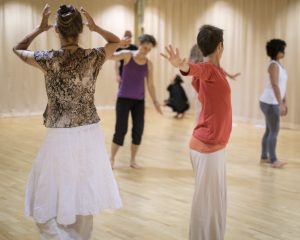This website offers various provocations that invite you to consider the role of the body in ethnographic research. It includes a Blog, a Podcast series and Audio Files with Guided Practice. Even though this is a virtual space, you are interacting with this from and through your body as instrument. While you browse, listen, read and explore, try to stay aware of your breath, your spine and your connection to this world-wide-web through your eyes, your finger tips, and your own physical experience.

Why this project?
Although most anthropologists will be familiar with the phrase ‘the body as research instrument’, to our knowledge there are no courses that teach students and researchers how to effectively be in their bodies and consciously apply their body as part of the research process. This 18-month project was funded by the National Centre for Research Methods, with the aim to contribute to innovation in Ethnographic Methods.
Somatic practices (derived from the Greek word for body‘sōma’) enable a structured exploration of body awareness. There are many such body-based practices. In this project we translated some of their generic insights to the research process. Awareness of breath, gaze, space, posture and positioning can act as physical aides when we are conducting research.
The Somatics Toolkit offers physically engaged, or ‘embodied’, approaches to activities such as conducting literature review, gathering and analysing data, writing and presenting. This can deepen your understanding of your research subjects’ experiences and lead to a richer and more authentic representation of your data, but also support you to stay healthy and well in the challenging process of conducting research.
You can engage with this Toolkit on your own, explore it with fellow students or colleagues, or even ask your tutor to use it in the classroom. We hope that the Somatics Toolkit will stimulate an (embodied) dialogue between body and mind, and offers a concrete way of translating research concepts and actions into physical, spatial awareness and vice versa, so that these ‘different expressions’ may mutually benefit each other.
